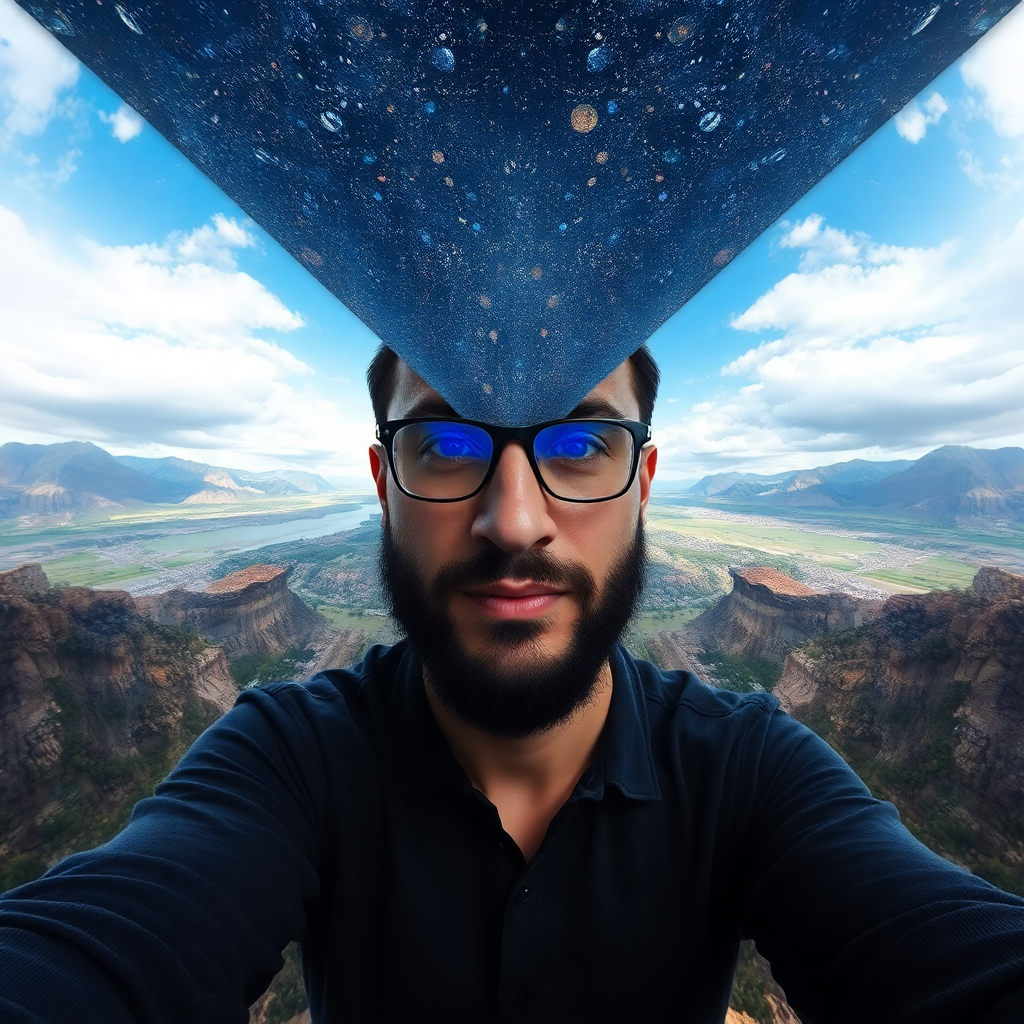
How Different People See the World & How Fascinating It Is
The Psychology of Perception
How Different People See the World
Perception is the lens through which we decipher and understand life. It’s shaped by our age, gender, identity, and countless other factors that influence how we interpret and interact with the world. From the boundless curiosity of children to the reflective wisdom of older adults, and from the nuanced differences between genders to the unique perspectives of individuals, the psychology of perception reveals the diversity of human thought. Exploring how these views differ provides valuable insights into the human experience and fosters deeper connections across generations and identities.

Children’s View of the World
Curiosity and Imagination
Children are natural explorers. Their view of the world is dominated by curiosity and boundless imagination. Because their brains are still developing, they’re more prone to seeing the world as a place full of possibilities, with fewer fixed boundaries or constraints. This perspective fuels their creativity and ability to dream big.
Egocentric Thinking
Psychologically, young children often exhibit egocentrism. This isn’t selfishness but rather a natural developmental phase where they have difficulty understanding perspectives other than their own. As they grow, they gradually learn empathy and the ability to see from others’ viewpoints.
Adults’ View of the World
Pragmatism and Routine
As adults age, their view of the world often becomes more pragmatic. Responsibilities and learned experiences shape their thinking, pushing them toward practicality and problem-solving. Many adults become less imaginative but excel in rational thinking and strategic planning.
Bias and Decision-Making
Adults develop cognitive biases from years of experiences, both good and bad. These biases, like confirmation bias, influence how they process information and make decisions. While they provide shortcuts for efficiency, they can also limit open-mindedness.

Older Adults’ View of the World
Wisdom and Reflection
Older adults often bring a wealth of wisdom to their perception of the world. With decades of life experience, they excel in reflective thinking and interpreting events within a larger context. This depth of understanding can make their worldview more nuanced.
Changing Priorities
Aging often shifts priorities toward relationships and emotional well-being. Older adults may view the world through a lens that values connection over material achievements, focusing on legacy and meaningful experiences.
Gender and Identity Differences
Males vs. Females
Research suggests that men and women may process the world differently due to a combination of biological and social factors. For example, females are often found to have stronger emotional intelligence and relational thinking, while males might lean toward problem-solving and logical frameworks. However, these trends are generalizations and do not define individuals.
Other Identities and Perspectives
The world is also seen differently by people who do not fit traditional gender binaries or who have unique lived experiences. For example, cultural background, neurodiversity, and socio-economic factors play a crucial role in shaping perspectives. These factors add layers of richness and diversity to how individuals perceive the world around them.

Cultural Influences on Perception
Cultural Values and Beliefs
Culture plays a significant role in shaping how people interpret the world. For instance, collectivist cultures often emphasize community and relationships, while individualistic cultures may focus on personal achievement and independence. These values influence how individuals perceive social interactions and decision-making.
Global vs. Local Perspectives
Exposure to diverse cultures can broaden or alter one’s perception. Those who are globally minded may see the world as interconnected, while others may focus more on local traditions and values, creating varying lenses through which life is interpreted.
Economic Factors and Worldviews
Wealth and Opportunity
Economic status can drastically impact perception. People with greater wealth may see the world as abundant with opportunities, while those facing financial challenges might view the world as a place of limited resources and inequality.
Access to Education
Access to education, closely tied to economic factors, shapes how individuals understand and interpret their surroundings. Those with higher education levels often have more tools to analyze and engage critically with complex ideas and systems.
Technological Influence on Perception
Digital Natives vs. Digital Immigrants
Generations raised in the digital age often perceive the world differently from those who grew up without advanced technology. For instance, younger individuals may see technology as integral to their identity, while older generations may see it as a tool or even a challenge.
Impact on Reality
The rise of augmented reality and social media platforms has blurred the lines between virtual and physical worlds. These advancements shape how people perceive themselves, their communities, and the broader world.

Psychological Traits and Perception
Optimists vs. Pessimists
Psychological traits like optimism or pessimism play a huge role in perception. Optimists are more likely to interpret events positively, while pessimists may focus on potential risks or downsides. This mindset influences how they experience life and make decisions.
Empathy and Connection
People with high levels of empathy may perceive the world through a relational lens, emphasizing emotions and connections. Conversely, those less attuned to empathy may focus more on facts and objective information.
Nature vs. Nurture in Shaping Views
Innate Tendencies
Some aspects of perception are influenced by biology and genetics. For example, temperament and innate preferences can shape how individuals approach the world from an early age.
Environmental Influences
The environments in which people are raised—family dynamics, societal norms, and geographical location—play a significant role in molding their worldview over time. These influences interact with biological factors to create unique perceptions.
Conclusion
The way we perceive the world is as unique as the individuals living within it. By understanding the differences in perception across age groups, genders, and identities, we gain a greater appreciation for the diversity of human experience. Whether shaped by curiosity, pragmatism, wisdom, or individuality, perception is a powerful force that defines how we see ourselves and others. In celebrating these differences, we cultivate empathy and a richer understanding of the intricate tapestry of perspectives that make up our world.
Join the Discussion
Perception is an incredible reflection of our individuality and shared humanity. How do you feel your experiences, identity, or stage of life shape the way you see the world?
#PerceptionPsychology #HumanExperience #AgeAndPerspective #GenderAndIdentity #ChildhoodWonder #WisdomOfAging #CulturalDiversity #EmpathyMatters #Neurodiversity #PsychologicalTraits #SocialInfluences #CuriosityDriven #AdultPragmatism #LegacyAndConnection #DigitalImpact #NatureVsNurture #OptimismVsPessimism #EnvironmentalFactors #FamilyDynamics #UniquePerspectives #EconomicViewpoints #GlobalMindset #EmotionalIntelligence #ReflectiveThinking #GenerationalDifference #CognitiveBias #ImaginationUnleashed #DiversityInThought #LifeStagePerspective #IdentityInfluence #CollectiveWisdom



WOW just what I was looking for. Came here by searching for layar kaca